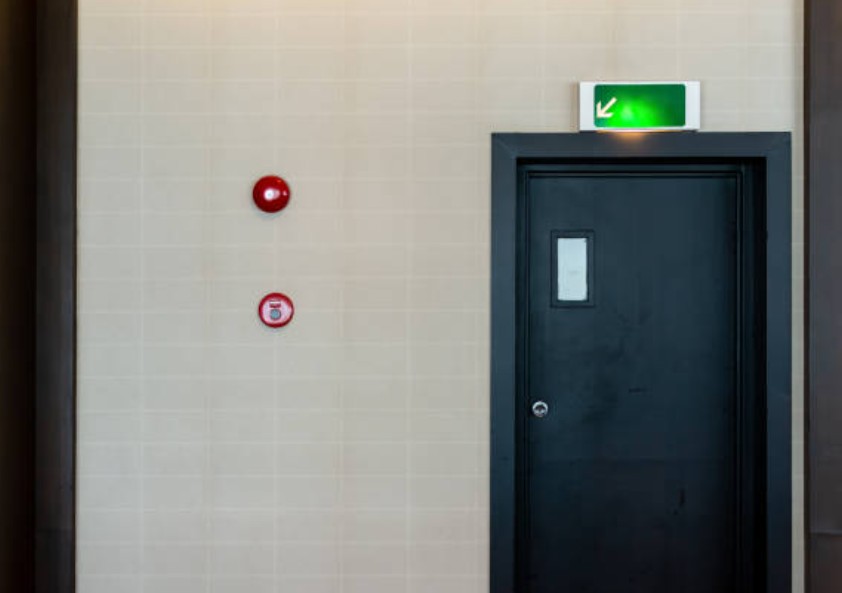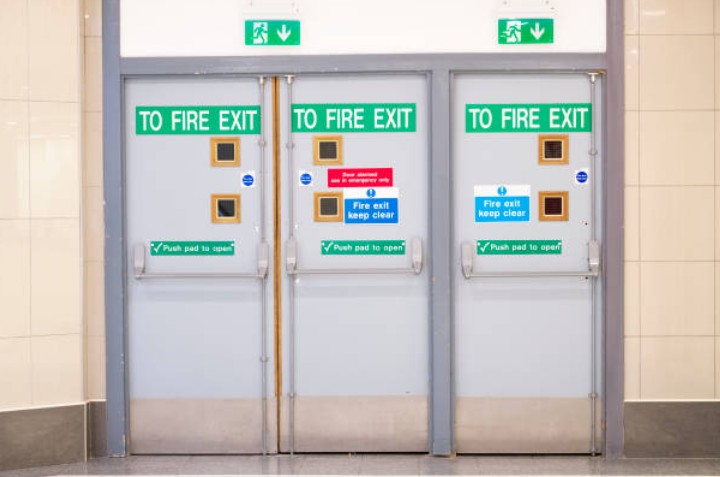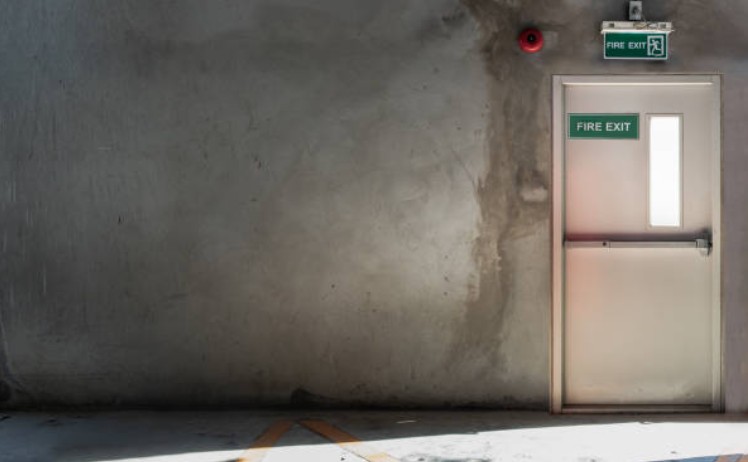In the realm of fire safety for UK healthcare facilities, one pressing question remains: what is the minimum time an NHS fire door will contain fire smoke and toxic fumes? Explores every layer of this critical safety measure. We examine the standards, technological advancements, and practical applications that keep patients, staff, and infrastructure safe while providing comprehensive insights into the evolution and future of fire door technology.
Why Are Fire Doors Vital in NHS Facilities?
Fire doors in NHS buildings are more than a regulatory requirement—they are a cornerstone of a comprehensive safety strategy. Their primary role is to delay the spread of fire, smoke, and toxic fumes, offering precious minutes for evacuation and emergency intervention.
Key Roles of NHS Fire Doors:
- Life Safety:
- Provide a controlled period for patient evacuation.
- Help protect healthcare workers during emergencies.
- Property Protection:
- Contain fire to prevent structural damage.
- Minimize the spread of smoke and toxic gases.
- Regulatory Compliance:
- Adhere to British (BS 476) and European (EN 1634-1) standards.
- Undergo rigorous testing to validate performance.
Essential Benefits:
- Increased Safety Margin: Extended containment times translate to more effective emergency responses.
- Enhanced Reliability: High-quality materials and advanced installation methods ensure the doors perform as intended.
- Cost Efficiency: Preventing fire spread reduces potential damage and downtime, saving resources over the long term.
How Does the Minimum Containment Time Work?

In most NHS settings, fire doors are designed to provide a minimum containment time of 30 minutes. This critical window allows:
- Early Detection: Time for fire alarms and suppression systems to activate.
- Evacuation Procedures: Safe movement of patients and staff out of harm’s way.
- Emergency Response: Enables first responders to arrive and manage the situation effectively.
Detailed Breakdown:
Initial 10 Minutes:
-
- Fire detection systems alert occupants.
- Automatic door closures are activated.
Next 10 Minutes:
-
- Evacuation protocols commence.
- Emergency teams begin assessment and intervention.
Final 10 Minutes:
-
- Further containment supports continued evacuation and additional safety measures.
This structure helps ensure that every second counts in saving lives and minimizing damage during a fire emergency.
What is the Minimum Time an NHS Fire Door Will Contain Fire Smoke and Toxic Fumes?
Directly addressing the central query, NHS fire doors are engineered to contain fire, smoke, and toxic fumes for at least 30 minutes under standard conditions. Enhanced models, which are installed in high-risk or critical areas, can offer resistance for up to 60-90 minutes.
Key Considerations:
Material Quality:
- Fire-resistant cores (e.g., mineral, composite materials) boost performance.
Precision Installation:
- Proper fitting and sealing are crucial for effective containment.
Regular Maintenance:
- Routine inspections ensure long-term reliability and adherence to safety standards.
Environmental Adaptability:
- Doors are designed to perform consistently in varied environmental conditions typical in NHS buildings.
What Current Standards Ensure Compliance in NHS Settings?
The performance of NHS fire doors is governed by strict standards that verify their ability to contain hazards during emergencies. Compliance with these standards is non-negotiable and is achieved through rigorous testing and quality control.
Below is an updated table summarising key fire door standards:
| Standard/Test | Minimum Duration | Application in NHS Facilities |
| BS 476 / EN 1634-1 | 30 minutes | Corridors, patient wards, entry points |
| Enhanced Resistance Models | 60-90 minutes | High-risk zones such as intensive care and emergency exits |
| Routine Inspection Protocols | Ongoing | Regular maintenance schedules to ensure continuous compliance |
How Has Fire Door Technology Evolved?

Fire door technology has seen remarkable progress over the decades, driven by advancements in materials science and testing methodologies. The progression unfolds across three distinct phases:
1. Early Developments:
- Focus: Basic durability and fire resistance.
- Testing: Initial fire tests established a foundational containment time.
- Materials: Predominantly timber and basic composites.
2. Modern Innovations:
- Enhanced Materials: Adoption of high-performance composites and mineral cores.
- Improved Sealing: Advanced seals that prevent the passage of smoke and toxic gases.
- Sophisticated Testing: Realistic fire simulations that mimic actual conditions.
3. Future Directions:
- Smart Technologies: Integration of sensors and IoT devices for real-time performance monitoring.
- Automation: Development of automated suppression systems linked to fire door mechanisms.
- Sustainable Design: Focus on eco-friendly materials and energy-efficient manufacturing processes.
4. Milestones in Innovation:
- 1990s: Introduction of basic fire-rated doors with limited resistance times.
- 2000s: Adoption of European standards and enhanced material technology.
- 2020s: Integration of digital monitoring and automated systems to optimize safety responses.
What Additional Measures Can Enhance Fire Door Performance?
Beyond the door’s inherent qualities, several strategies can significantly bolster overall fire safety in NHS facilities:
Comprehensive Training Programs:
-
- Educating staff on evacuation procedures.
- Regular fire drills are conducted to test and improve response times.
Integrated Alarm and Suppression Systems:
-
- Linking fire doors to building-wide fire alarms.
- Automatic activation of fire suppression systems upon detection of elevated temperatures.
Ongoing Research and Development:
-
- Collaborative efforts between manufacturers, safety experts, and regulatory bodies.
- Continuous refinement of testing protocols to simulate emerging fire risks.
Advanced Material Research:
-
- Investigating new composites and fire retardants.
- Exploring sustainable alternatives that maintain or improve performance.
What Are the Testing Methods for NHS Fire Doors?

Testing protocols for NHS fire doors involve several stages to ensure reliability under real-world conditions:
- Lab Testing:
- Simulated fire conditions in controlled environments.
- Measurement of heat, smoke, and toxic fumes containment.
- Field Testing:
- Installation in actual NHS settings for performance evaluation.
- Continuous monitoring to assess durability and resilience.
- Certification:
- Doors are certified based on their ability to meet or exceed the minimum 30-minute containment time.
- Enhanced models receive additional certification for extended resistance times.
Common Testing Criteria:
- Thermal Resistance: Ability to withstand high temperatures.
- Smoke Tightness: Efficiency in preventing smoke passage.
- Structural Integrity: Maintenance of physical integrity during fire exposure.
How Do Material Choices Impact Performance?
Material quality is pivotal in determining how long a fire door can effectively contain fire, smoke, and toxic fumes. The following factors are critical:
- Core Material:
- Mineral Cores: Known for their superior fire resistance.
- Composite Materials: Offer a balance between strength and flexibility.
- Timber Cores: Often used in combination with fire retardants.
- Surface Treatments:
- Fire-resistant coatings that improve durability.
- Sealing materials that enhance smoke and toxic fume containment.
- Manufacturing Standards:
- Consistency in production processes ensures each door meets performance expectations.
- Quality control measures are in place to detect and rectify any discrepancies during manufacturing.
Conclusion
The question what is the minimum time an NHS fire door will contain fire smoke and toxic fumes? It is fundamental to understanding fire safety in UK healthcare settings. With a standard minimum containment time of 30 minutes and enhanced options available for high-risk areas, these fire doors are crucial for protecting lives and property during emergencies. The continuous evolution of fire door technology, from advanced materials to smart integrations, ensures that NHS facilities remain at the forefront of fire safety.
By understanding the rigorous standards, testing methods, and technological innovations that underpin NHS fire door performance, stakeholders can be confident in the measures that protect patients, staff, and infrastructure. As fire safety protocols continue to evolve, the commitment to excellence in design, maintenance, and innovation will ensure that every NHS facility is equipped to handle emergencies with precision and reliability.
Frequently Asked Questions
Why is a 30-minute containment period critical in NHS facilities?
This period provides a necessary buffer for safe evacuation, allows emergency systems to activate, and gives first responders time to manage the situation.
Can NHS fire doors be upgraded to provide longer containment times?
Yes, in high-risk or critical areas, doors with enhanced ratings (up to 60-90 minutes) are used to provide additional safety.
How often should fire doors in NHS facilities be inspected?
Regular inspections and maintenance schedules are essential to ensure the doors continue to meet required safety standards.






